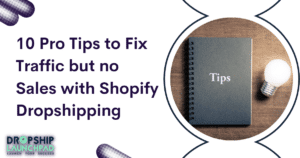Are you confused about the term “high risk payment gateway Shopify”? In this comprehensive guide, we’ll delve into the world of high-risk businesses and how they differ from traditional ones. We will provide examples of industries that fall under the high-risk category and explain why they are considered as such.
Join us as we navigate this complex topic and equip you with the knowledge needed to make informed decisions for your Shopify store.
What is High Risk business?

A high-risk business refers to a business that has a greater likelihood of encountering issues like fraud, chargebacks, or legal complications. This category can include industries such as gambling, adult entertainment, CBD, and travel services.
High-risk businesses typically need a specialized payment gateway capable of handling their specific challenges. Due to the higher risk involved, these businesses may face increased fees and stricter underwriting requirements from payment processors.
Examples of High-Risk businesses
High-risk businesses encompass a range of industries that are more susceptible to chargebacks, fraud, and legal issues.
- Online gambling
- Cryptocurrency
- adult entertainment
- CBD products
- Drug or Medical Items
- Monetary Services
- Debt collection services are just a few examples of high-risk businesses.
To manage the risks associated with their business type, these businesses require a high-risk payment gateway. A reliable and reputable high-risk payment gateway provider can offer the necessary support and security measures to ensure secure and efficient transaction processing.
Understanding High Risk Payment Gateways for Shopify

It is essential to have a safe and dependable payment gateway while operating an online company. However, some businesses, such as those operating in industries with a high risk of chargebacks or fraud, may face challenges in finding suitable payment solutions. This is where high risk payment gateways come into play.
A high risk payment gateway is a specialized payment processing solution designed to cater to businesses that are classified as high risk by banks and financial institutions. High risk payment gateways are equipped with advanced fraud prevention tools and features that can help mitigate the risks associated with these businesses.
Why Do You Need a High Risk Payment Gateway?
If your Shopify store falls into the high risk category, it’s essential to integrate a high risk payment gateway to ensure smooth and secure payment processing. Here are a few reasons why you may need a high risk payment gateway for your Shopify store:
- Approval for High Risk Industries: Traditional payment processors often decline businesses in high risk industries due to the potential for chargebacks or fraud. High risk payment gateways specialize in working with these industries and can provide the necessary approval.
- Advanced Fraud Prevention: High risk payment gateways employ robust fraud prevention tools and technologies to protect your business from fraudulent transactions. These include features like fraud scoring, IP geolocation, 3D Secure, and more.
- Customized Risk Management: High risk payment gateways offer customizable risk management solutions tailored to your business’s specific needs. This allows you to set transaction limits, review orders manually, and implement other risk control measures.
- Chargeback Management: Chargebacks can be a significant concern for high risk businesses. High risk payment gateways typically provide chargeback management tools and services to help you handle and resolve chargeback disputes efficiently.
By integrating a high risk payment gateway into your Shopify store, you can ensure a seamless and secure payment experience for your customers while protecting your business from potential risks.
Stay tuned for the next sections of this comprehensive guide, where we will explore the best high risk payment gateways for Shopify and provide in-depth information and recommendations for each.
How Does it Differ from Regular Payment Gateways?

The primary difference between a high-risk payment gateway and a regular payment gateway is the level of risk associated with the businesses they serve. Regular payment gateways cater to businesses in low-risk industries, such as retail, food, and services, where the risk of fraud and chargebacks is relatively low.
In contrast, high-risk payment gateways are specifically designed to address the unique challenges faced by high-risk industries. These challenges include higher chargeback rates, stricter compliance requirements, and increased susceptibility to fraudulent transactions.
High-risk payment gateways typically have more robust risk management tools, chargeback prevention measures, and compliance features to meet the specific needs of high-risk businesses. They work with acquiring banks and payment processors that specialize in high-risk industries to ensure secure and reliable payment processing for these merchants.
Overall, a high-risk payment gateway provides the necessary infrastructure and features to enable high-risk businesses to accept online payments securely while managing the increased risks associated with their industries.
Factors that Determine High Risk Classification

When it comes to high-risk payment gateways on Shopify, there are several factors that can determine if a business falls into this category. Understanding these factors can help you assess whether or not your business might be considered high risk and in need of a specialized payment gateway. Here are two key factors to consider:
Industry and Business Type
The industry and type of business you operate is a major deciding factor in whether or not you are classified as a high-risk merchant. Certain industries inherently carry a higher risk of fraudulent activity, chargebacks, or other financial risks. Some common high-risk industries include:
- Adult entertainment
- Online gambling
- Prescription medications
- Vape and e-cigarette sales
- CBD and hemp products
- Travel and vacation rentals
While this is not an exhaustive list, these industries often face stricter regulations and higher instances of customer disputes or fraud. If your business operates within one of these industries or falls into a similar category, it is more likely to be classified as high risk.
Chargeback and Fraud Risk
High instances of chargebacks or fraud can also lead to a business being classified as high risk. Chargebacks occur if any customer disputes a transaction with their credit card provider and requests a refund. High chargeback rates can indicate potential issues with customer satisfaction, product quality, or fraudulent activity.
Fraud risk is another significant consideration for payment gateways. If your business sells high-value or easily resalable products, it may be more susceptible to fraudulent orders. Businesses that operate in regions with high instances of fraudulent activity may also be classified as high risk.
To mitigate the risk associated with chargebacks and fraud, high-risk merchants may be required to use specialized payment gateways that offer additional security measures and fraud prevention tools. These gateways help protect both the merchant and the customer by reducing the likelihood of fraudulent transactions and chargeback disputes.
Top High Risk Payment Gateway Providers for Shopify

Here are some of the top high risk payment gateway providers that integrate seamlessly with Shopify:
Authorize.Net

Authorize.Net: One of the most popular payment gateway providers, Authorize.Net offers a wide range of features and services for high-risk businesses. It supports credit card and electronic check payments, subscription billing, fraud detection, and more. With its robust security measures, Authorize.Net is a trusted choice for many Shopify merchants.
Paykings

Specializing in high-risk merchant accounts, Paykings offers a secure and flexible payment gateway solution for Shopify. With its multiple-provider approach, Paykings can find the best payment processor for your specific business needs. They offer advanced fraud protection tools, chargeback management, and 24/7 customer support to ensure smooth operations for high-risk businesses.
SagePay

With its extensive experience in handling high-risk transactions, SagePay is a reliable choice for Shopify merchants. It offers robust security features, including tokenization and 3D Secure, to protect sensitive customer data. SagePay also provides real-time reporting and analytics, making it easier for businesses to monitor their transactions and identify potential risks.
DigiPay

Known for its expertise in high-risk payment processing, DigiPay offers seamless integration with Shopify. It provides secure payment processing solutions tailored to the needs of high-risk businesses, including fraud prevention tools and chargeback management. DigiPay also offers multiple payment methods and global currency support, making it a flexible option for Shopify merchants.
By choosing one of these top high-risk payment gateway providers for Shopify, you can ensure that your business operates smoothly and securely. These providers offer advanced features, robust security measures, and excellent customer support to help you manage your high-risk payments effectively.
How to Choose the Right High Risk Payment Gateway for Shopify

Not all payment gateways are created equal, and you need to consider several factors before making a decision. Here are some key considerations and features to look for when selecting a high risk payment gateway for your Shopify store:
Considerations and Key Features
- Risk Management Tools: A high risk payment gateway should have robust risk management tools in place to help prevent fraudulent transactions and protect your business. Look for features such as fraud detection, chargeback prevention, and 3D secure authentication.
- High Approval Rates: Find a payment gateway that specializes in high risk businesses and has a high approval rate for these types of merchants. This will ensure that you can accept a wide range of payment methods and minimize the risk of losing potential customers.
- Flexible Integration: Look for a payment gateway that seamlessly integrates with your Shopify store. This will make it easier to set up and manage your high risk payments, reducing the need for manual intervention and streamlining the customer experience.
- Multiple Payment Options: Consider a payment gateway that supports several payment methods, including credit cards, e-wallets, and alternative payment options. This will give your customers more flexibility.
Integration and Compatibility with Shopify
When selecting a high risk payment gateway for Shopify, it’s important to ensure that the gateway is fully compatible and integrates smoothly with the platform. Consider the following factors:
- Native Integration: Check if the payment gateway offers native integration with Shopify. Native integrations are usually easier to set up and provide a seamless experience for both you and your customers.
- API Support: Look for a payment gateway with robust API support that allows you to customize and tailor the payment experience to your specific business needs.
- Customer Support: Lastly, consider the level of customer support offered by the payment gateway. Look for a provider that offers responsive and helpful support to assist you with any technical issues or questions that may arise.
Choosing the right high risk payment gateway for your Shopify store is crucial for ensuring smooth and secure transactions. By considering these key factors and features, you can find a payment gateway that meets your business requirements.
Setting Up a High Risk Payment Gateway on Shopify

Step-by-Step Guide and Configuration
Setting up a high risk payment gateway on Shopify requires careful configuration and following specific steps. Here is a step-by-step guide to help you navigate the process:
- Research and choose a high risk payment gateway provider that integrates with Shopify.
- Sign up for an account with your chosen payment gateway provider. Follow their instructions and provide the necessary documentation and information.
- Install the payment gateway app from the Shopify App Store. Most payment gateway providers offer their own app for seamless integration with Shopify.
- Configure the payment gateway settings within Shopify. This typically involves entering your account credentials, API keys, and other authentication details provided by the payment gateway provider.
- Set up any additional features or preferences offered by the payment gateway, such as fraud prevention tools or recurring billing options.
- Test the payment gateway integration to ensure it is functioning correctly. Place a test order using a high risk transaction scenario to verify that the payment process works smoothly.
Testing and Ensuring Smooth Transactions
Once you have set up your high risk payment gateway on Shopify, it is crucial to thoroughly test and monitor the transactions to ensure everything is working as expected. Here are some tips for testing and ensuring smooth transactions:
- Run test transactions using various scenarios, including successful transactions, declined transactions, and transactions with different error responses.
- Monitor transaction data, including successful payments, chargebacks, and any potential fraud activity.
- Regularly review and update your fraud prevention settings to stay ahead of evolving threats.
- Stay updated on best practices for high risk payment processing to optimize your payment gateway setup.
By following these steps and regularly monitoring your high risk payment gateway integration on Shopify, you can ensure a smooth and secure payment experience for your customers and minimize the risks associated with high risk transactions.
Benefits and Drawbacks of High Risk Payment Gateways

Advantages for High Risk Businesses
High risk payment gateways offer several benefits for businesses operating in industries where there is a higher risk of fraud or chargebacks. Some advantages include:
- Increased Approval Rates: High risk payment gateways specialize in working with high risk businesses and have a higher acceptance rate compared to traditional payment processors, ensuring that businesses can accept a wide range of payment methods.
- Fraud Protection: High risk payment gateways often have robust fraud detection and prevention tools in place to help mitigate the risks associated with high risk industries. These tools can help businesses identify and reduce fraudulent transactions, protecting their bottom line.
- Chargeback Management: High risk payment gateways typically offer comprehensive chargeback management solutions, providing businesses with the tools and support they need to handle chargebacks effectively. This can save businesses time and money associated with chargeback disputes.
- Multi-Currency Support: For businesses that operate internationally, high risk payment gateways often offer multi-currency support, allowing customers to pay in their local currency. This can help improve the shopping experience and expand the business’s global reach.
Potential Limitations and Challenges
While high risk payment gateways offer many advantages, there are also some potential limitations and challenges that businesses should be aware of:
- Higher Fees: Due to the increased risks associated with high risk businesses, high risk payment gateways may charge higher transaction fees compared to traditional payment processors. This is important for businesses to factor into their pricing and financial planning.
- Rolling Reserves: High risk payment gateways may require businesses to maintain a rolling reserve, which is a percentage of each transaction held in reserve for a certain period of time. This is a risk management measure that can tie up a business’s cash flow.
- Limited Availability: Not all payment gateways specialize in high risk industries, which means that businesses may have a more limited selection of high risk payment gateways to choose from. This can make it more challenging to find a suitable solution.
Despite these potential limitations and challenges, high risk payment gateways are an essential tool for businesses in high risk industries. They provide the necessary infrastructure and support to help businesses thrive while managing the unique risks associated with their industry.
FAQs about high-risk payment gateway

What is a high-risk payment gateway, and why is it necessary for Shopify?
A high-risk payment gateway is a specialized service that enables businesses in high-risk industries to accept online payments. It offers advanced security features, fraud prevention tools, and integration with Shopify to provide a seamless checkout experience for customers. It is necessary for Shopify because it allows high-risk businesses to operate within the platform and accept payments from customers worldwide.
How can I determine if my business falls into the high-risk category?
There are several factors that can determine if your business falls into the high-risk category, including:
- Industry: Certain industries, such as adult entertainment, gambling, and CBD, are considered high-risk due to legal regulations and higher chargeback rates.
- Business model: Subscription-based businesses, high-ticket sales, and businesses with a history of chargebacks may also be classified as high-risk.
- Credit history: If the business owner has a poor credit history or a history of fraud, it can also contribute to being classified as high-risk.
To determine if your business is high-risk, it is recommended to consult with a payment gateway provider or Shopify’s support team. They can assess your specific circumstances and provide guidance on the best solution for your business.
Conclusion
A high-risk business is one that operates in an industry or sector that is considered risky by payment processors and financial institutions. These businesses typically have a higher likelihood of chargebacks, fraud, or legal and regulatory issues.
Hope this comprehensive guide to high-risk payment gateways for Shopify provides you with all the information you need to navigate this complex landscape and find the right payment gateway for your business.
Remember to do thorough research, compare different options, and select a payment provider that aligns with your business needs. With the right high-risk payment gateway in place, you can focus on growing your business and maximizing your online success.
Check out our other posts-
- What is Shopify: Unlocking the Mystery
- Prebuilt Shopify Store in 2022: Where to Buy [Without Money]
- How to Promote Shopify Store for Free in 2023 [Secret tips]
- Why Should You Buy Shopify Store for Dropshipping in 2023?
- 2023’s Ultimate Checklist for launching a Shopify store
- 2023’s Best Ways to Add Trust Badges to Shopify Store
- 2023’s tips & tricks to avoid 30 common Shopify store mistakes
- Is Dropshipping Dead or Alive? Revealing the Reality
- Pros and Cons of Dropshipping: A Comprehensive Analysis
- High Ticket Dropshipping Niches Unleashed: Secret to Success
- 20 High-Ticket Dropshipping Products in 2023
- Maximize Profits With Dropshipping Garden Supplies
- How to Use CJ Dropshipping with Shopify: Step-by-Step

 Shopify Dropshipping Business Guide: The Ultimate Solution 2023
Shopify Dropshipping Business Guide: The Ultimate Solution 2023  Shopify: How do you accept Bitcoins (and other crypto payments)?
Shopify: How do you accept Bitcoins (and other crypto payments)?  10 Pro Tips to Fix Traffic but no Sales with Shopify Dropshipping
10 Pro Tips to Fix Traffic but no Sales with Shopify Dropshipping  Google Ads Conversion tracking on Shopify: How to set it up?
Google Ads Conversion tracking on Shopify: How to set it up?